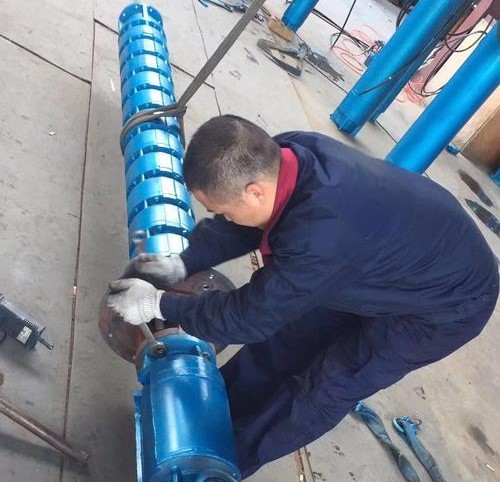Submersible pumps are very common pumps, and they are indispensable in daily life or work. The reasons why a submersible pump cannot start may involve multiple aspects, mainly including power supply problems, motor failure, mechanical failure and some other special cases. The following is a detailed analysis of these reasons:

Power Supply Problem
Insufficient power supply voltage: Submersible pumps usually require a higher starting voltage. If the power supply voltage is lower than its rated voltage, the motor may not start. At this time, it is necessary to check whether the power supply voltage is normal and take measures to increase the voltage.
Power line failure: The power line may have problems such as open circuit, short circuit or poor contact, resulting in the inability of current to be transmitted normally to the submersible pump. At this time, it is necessary to check whether the power line is intact and repair the fault in time.
Power switch damage: The power switch is a key component that controls the power on and off. If it is damaged, the power supply cannot be connected normally. Therefore, it is necessary to check whether the power switch is intact and replace it in time if it is damaged.
Motor Failure
Motor winding burnout: The motor winding is prone to burnout under long-term operation or overload conditions, resulting in the motor not being able to work properly. At this time, it is necessary to check whether the motor winding is burned, and if necessary, replace the winding or the entire motor.
Damage to the motor bearing: Damage to the motor bearing will cause the motor rotor to not rotate normally, so that the motor cannot start. Therefore, it is necessary to check whether the motor bearing is intact, and if it is damaged, it should be replaced in time.
Internal short circuit of the motor: There may be a short circuit inside the motor, which causes the current to not pass through the motor normally. At this time, it is necessary to check whether there is a short circuit inside the motor and repair it in time.
Mechanical Failure
Impeller blockage: The impeller of the submersible electric pump may be blocked during long-term operation, causing the water flow to not pass through the pump body smoothly, so that the pump cannot start. At this time, it is necessary to clean the debris on the impeller to ensure smooth water flow.
Mechanical seal damage: Submersible electric pumps usually use mechanical seals to prevent water from entering the motor. If the mechanical seal is damaged, it will cause water to enter the motor and make the motor unable to work properly. Therefore, it is necessary to check whether the mechanical seal is intact, and if it is damaged, it should be replaced in time.
Bearing damage: In addition to the motor bearing, other bearings of the submersible electric pump may also be damaged, causing the pump body to not rotate normally. At this time, it is necessary to check whether the bearing is intact. If it is damaged, it should be replaced in time.
Other Special Situations
Failure of the centrifugal switch or damage of the capacitor: This will cause the motor to fail to start or unstable operation after starting. The solution is to adjust the centrifugal switch or replace the capacitor.
Water leakage in the cable segment or junction box: The cable segment will affect the current transmission, and water leakage in the junction box may cause short circuit or insulation failure. The solution is to replace the cable or dry the water in the junction box.
Motor overheating: When the motor is overheated, the control cabinet may automatically protect and cut off the power supply. At this time, it is necessary to let the motor cool naturally before trying to start.
Motor phase loss, leakage, overload: These problems may cause the motor to fail to start or stop quickly after starting. The solution is to check the pump or motor to eliminate the corresponding faults.
The reasons why the submersible electric pump cannot start may involve multiple aspects such as power supply, motor, and machinery. When troubleshooting, it is necessary to carefully check each link and take corresponding solutions according to the specific situation.



